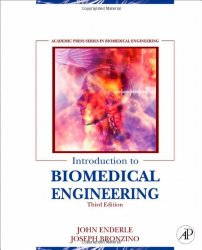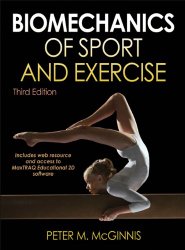 Biomechanics of Sport and Exercise
Biomechanics of Sport and Exerciseby Peter M. McGinnis
Publisher: Human Kinetics Pub
ISBN: 0736079661
Biomechanics of Sport and Exercise, Third Edition With Web Resource and MaxTRAQ Educational 2D Software Access, is supplemented with two companion resources that will help students better comprehend the material. The web resource includes all of the problems from the book, separated by chapter, plus 18 sample problems that guide students step by step through the process of solving.
This text is also enhanced with access to MaxTRAQ Educational 2D software for Windows. MaxTRAQ Educational 2D software enables students to analyze and quantify real-world sport movements in video clips and upload their own video content for analysis. The software supplements the final section of the text that bridges the concepts of internal and external forces with the application of biomechanics; it also provides an overview of the technology used in conducting quantitative biomechanical analyses. Access to both online resources is included with new print books. To purchase the components separately, click on the web resource under “Related Products” in the right column.
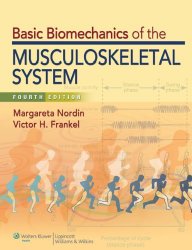 Basic Biomechanics of the Musculoskeletal System
Basic Biomechanics of the Musculoskeletal Systemby Margareta Nordin, Victor H. Frankel
Publisher: Lippincott Williams & Wilkins Publishers
ISBN: 1609133358
Basic Biomechanics of the Musculoskeletal System uses a direct and comprehensive approach to present students with a working knowledge of biomechanical principles of use in the evaluation and treatment of musculoskeletal dysfunction. The text opens with a chapter that introduces the basic terminology and concepts of biomechanics; the remainder of the book then focuses on the biomechanics of tissues and structures, the biomechanics of joints, and applied biomechanics.
Introduces biomechanical principles for use in the evaluation and treatment of musculoskeletal dysfunction. Three sections address the biomechanics of musculoskeletal tissues and structures, the biomechanics of joints, and applied biomechanics.
 Biomechanics: Mechanical Properties of Living Tissues
Biomechanics: Mechanical Properties of Living Tissuesby Yuan-Cheng Fung
Publisher: Springer Verlag
ISBN: 0387979476
The first of three volumes. References have been updated, and new material has been added to this second edition, including coverage of coagulation of blood, thrombus formation and dissolution, cellular mechanics, deformability of passive leukocytes, mechanics of the endothelial cells in a continuum, news about types of collagen, new methods of testing mechanical properties of soft tissues, the relationship between continuum mechanics and the structure and ultrastructure of tissues, and the cross-bridge theory of muscle contraction. Contains new problems and examples.
University of California, San Diego. New edition of a student text on biomechanics from the standpoint of bioengineering, physiology, and medical sciences. Includes problems in each area. Previous edition 1981. Illustrated.
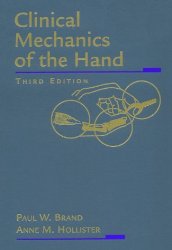 Clinical Mechanics of the Hand
Clinical Mechanics of the Handby Paul W. Brand, Anne, MD Hollister
Publisher: Mosby-Year Book
ISBN: 0815127863
This newest edition seeks to improve upon this source of information by increasing the amount of material covering applications to trauma, arthritis, Dupuytren's disease, spasticity, and overuse syndromes.
New sections also cover extensor mechanisms, wrist, forearm, and outcome studies.
Univ. of Washington, Seattle. Interdisciplinary text on the mechanical basis of the workings of the hand. For hand surgeons and therapists. This edition has expanded the clinical applications to include common conditions, such as arthritis, stroke, and trauma. Extensively illustrated with line drawings and halftone photos. Previous edition: c1993.
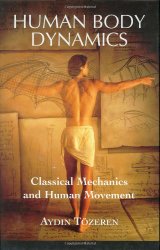 Human Body Dynamics: Classical Mechanics and Human Movement
Human Body Dynamics: Classical Mechanics and Human Movementby Aydin Tozeren
Publisher: Springer Verlag
ISBN: 0387988017
The main goal of this book is to present principles of classical mechanics using case studies involving human movement. The book assumes a background in calculus and physics. Vector algebra and vector differentiation are introduced in the text and are used to describe the motion of objects. Advanced topics such as three-dimensional motion mechanics are treated in some depth. Whenever possible, the analysis is also presented graphically, by using diagrams and software-created sequences of human movement in an athletic event or a dance performance. Each chapter contains illustrative examples and problem sets.
Human Body Dynamics is a remarkable book. A concise, comprehensive, well-written and well illustrated first chapter gives a necessary introduction to the anatomy of the human body. In the following chapters human body dynamics is explored using the principles of classical mechanics. The concluding chapter deals with the methods of three-dimensional mechanics. With these powerful tools, a myriad of very interesting problems are solved.
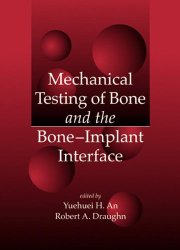 Mechanical Testing of Bone and the Bone-Implant Interface
Mechanical Testing of Bone and the Bone-Implant Interfaceby Yuehuei H. An, Robert A. Draughn
Publisher: CRC Press
ISBN: 0849302668
The mechanical properties of whole bones, bone tissue, and the bone-implant interfaces are as important as their morphological and structural aspects. Mechanical Testing of Bone and the Bone-Implant Interface helps you assess these properties by explaining how to do mechanical testing of bone and the bone-implant interface for bone-related research.
Articles explore the basic mechanical principles of bone-related study and how to conduct mechanical testing of bone specimens. More practical than theoretical, the text includes 42 chapters in three sections that cover mechanical properties of bone, general considerations of mechanical testing, basic facilities and instruments for mechanical testing; mechanical testing procedures on bone tissues; and mechanical testing procedures on the implant-bone interface. There are approximately three hundred illustrations, including line drawings, diagrams, tables, and photographs.
